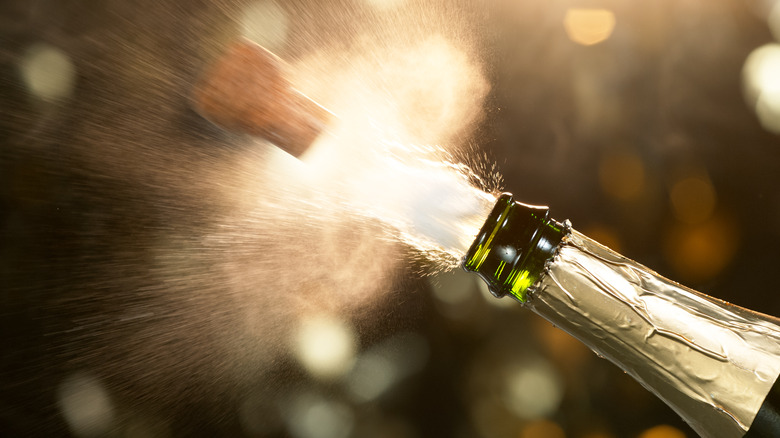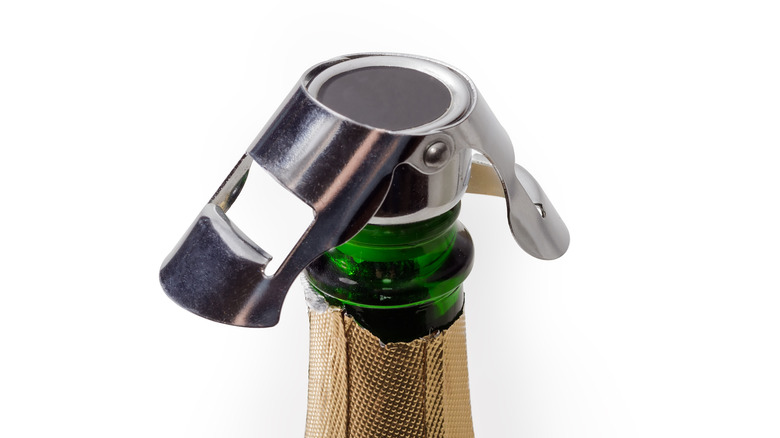The Champagne Spoon Trick You Need To Stop Believing
Champagne is named after the region in France from where it hails and is made using the méthode champenoise (via MasterClass). However, despite its association with high-profile parties and events, it still falls under the humble umbrella of sparkling wines. But, as wine drinkers, we are enchanted by its golden hue and dainty stream of bubbles.
There are quite a few methods with which to make sparkling wine. The most popular might very well be the méthode champenoise or the Champagne method which is considered one of the classic sparkling styles, but there are others like the Charmat method, the tank method, and the carbonation method (via Wine Folly). Of course, there are impassioned debates surrounding the efficacy of these methods; which method is less traumatizing to the wine, which method best preserves the aromatics and the flavor, which creates smaller, more long-lasting bubbles, and so on. But, at the end of the day, Wine Spectator tells us that all sparkling wine is created by trapping carbon dioxide inside the bottle which pressurizes and forms bubbles.
Why does Champagne go flat?
The world is obsessed with bubbles. We drink carbonated water, soda, beer, and of course sparkling wine. The sound of popping Champagne is blissful to most ears and a good indication of delicious and happy times ahead. That being said, there is nothing more disappointing than pouring yourself a celebratory glass of wine only for it to fall flat, literally. Like all good things, carbonation doesn't last. According to the American Chemical Society when carbon dioxide molecules in a beverage like wine or soda are exposed to the air, they will eventually escape, causing the wine to go flat.
We want to keep our sparkling wine carbonated for as long as possible after popping the cork but not everyone has access to a professional-grade sparkling wine stopper — the best tool for retaining carbonation (via Liquor). So, people have come up with some interesting techniques to preserve the fizz, but many of these methods are more myth than fact.
Myth vs. tested fact
One of the strangest (and inaccurate) methodologies used to preserve Champagne carbonation is the spoon trick. This old wives' tale is lauded by Taste of Home and goes as follows: If you place the handle of a metal spoon into the neck of your Champagne bottle, the metal spoon somehow affects the air temperature and creates a "barrier" for the carbon dioxide.
But, Stanford University chemists and the Interprofessional Committee of Champagne (CIVC) beg to differ. According to their research, the spoon technique has no effect on keeping your bottle of sparkling wine carbonated (via Scientific American). The test involved a number of opened bottles and various ways in which to stop bubbles from escaping, or not — as the case may be. Regarding the results of this experiment, chemist and food journalist Herv This said, "the pressure in bottles opened and left open or in bottles opened and left open with a spoon decreased in the same way — whereas a stopper or cork prevented the gas escape." Wine Family suggests that in addition to using a stopper or cork to prevent the carbon dioxide from escaping, it is important to keep the wine bottle cold.


